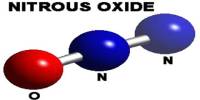A significant turning point in the history of medicine was the discovery of antibiotics in 1928. Doctors now got access to a very potent and useful weapon to combat a wide range of bacterial infections for the first time since the birth of human civilisation.
Today, it is possible to treat or prevent infections after surgery or chemotherapy, and bacterial diseases that were formerly fatal can now be cured. Unfortunately, drug-resistant bacterial species have emerged as a result of the widespread use (and abuse) of antibiotics.
Over time, bacteria that a particular drug could typically kill created mutant progeny resistant to it. The only safe course of action is to create new antibiotic compounds because these mutant strains pose a serious threat to the general public’s health.
Against this backdrop, a research team including Professor Isamu Shiina, Assistant Professor Takatsugu Murata and Mr. Hisazumi Tsutsui from the Tokyo University of Science (TUS) in Japan has now achieved a major breakthrough in the synthesis of new antibiotics.
The researchers successfully completed the first-ever gram-scale synthesis of tanzawaic acid B, which can be a candidate for the development of novel medicines, as detailed in their publication that was published in ACS Omega in July 2023.
For more than 25 years since its discovery, the total synthesis of tanzawaic acid B had not been realized, until now. The present synthesis method will hopefully lead to the creation of various compounds for pharmaceuticals in the future, including new antibiotic candidates for multidrug-resistant bacteria.
Professor Isamu Shiina
But what is tanzawaic acid B?
In 1997, Professor Daisuke Uemura and colleagues working in the Tanzawa area of Japan isolated a series of organic polyketide compounds from the fungus Penicillium citrinum. These compounds were grouped together into what we now call the “tanzawaic” acid family, containing dozens of members ranging from A to Z1.
An artificial synthesis approach for tanzawaic acid B could easily lead to synthesis methods for the other tanzawaic acids because it shares a core structure with many of them, drawing the most attention in particular.
However, synthesizing tanzawaic acid B from scratch is a challenging endeavor. The tanzawaic acids all have a polysubstituted octalin skeleton in common, which is a tight-knit structure made of 10 carbon atoms with various chemical groups at specified positions.
The scientists used a molecule that resembled a chain that they had previously created in a study to create this skeleton. Then, they forced these chains to preferentially “fold” into the required octalin skeleton by using a carefully regulated intramolecular Diels-Alder process.
The next challenge was to precisely modify the octalin skeleton in multiple steps to produce tanzawaic acid B. Given that octalin possesses eight carbon atoms that are capable of taking part in stereochemical processes, any intended substitution must effectively outperform 255 other configurations.
The researchers used asymmetric Mukaiyama aldol reaction and asymmetric alkylation to address this problem and were able to generate the desired polysubstituted octalin product tanzawaic acid B on a gram scale.
Overall, the development of antimicrobial medications based on tanzawaic acids may greatly benefit from this new method of production. Excited about the outcome of the study, Prof. Shiina comments:
“For more than 25 years since its discovery, the total synthesis of tanzawaic acid B had not been realized, until now. The present synthesis method will hopefully lead to the creation of various compounds for pharmaceuticals in the future, including new antibiotic candidates for multidrug-resistant bacteria.”
Researchers will soon be able to evaluate the tanzawaic acids’ intriguing biological activity, including as their antibacterial, antimalarial, and antifungal characteristics.
“Further improvements to the synthesis of tanzawaic acid B are currently underway, along with the investigations of its biological activity and synthetic analogs,” concludes Prof. Shiina.
















